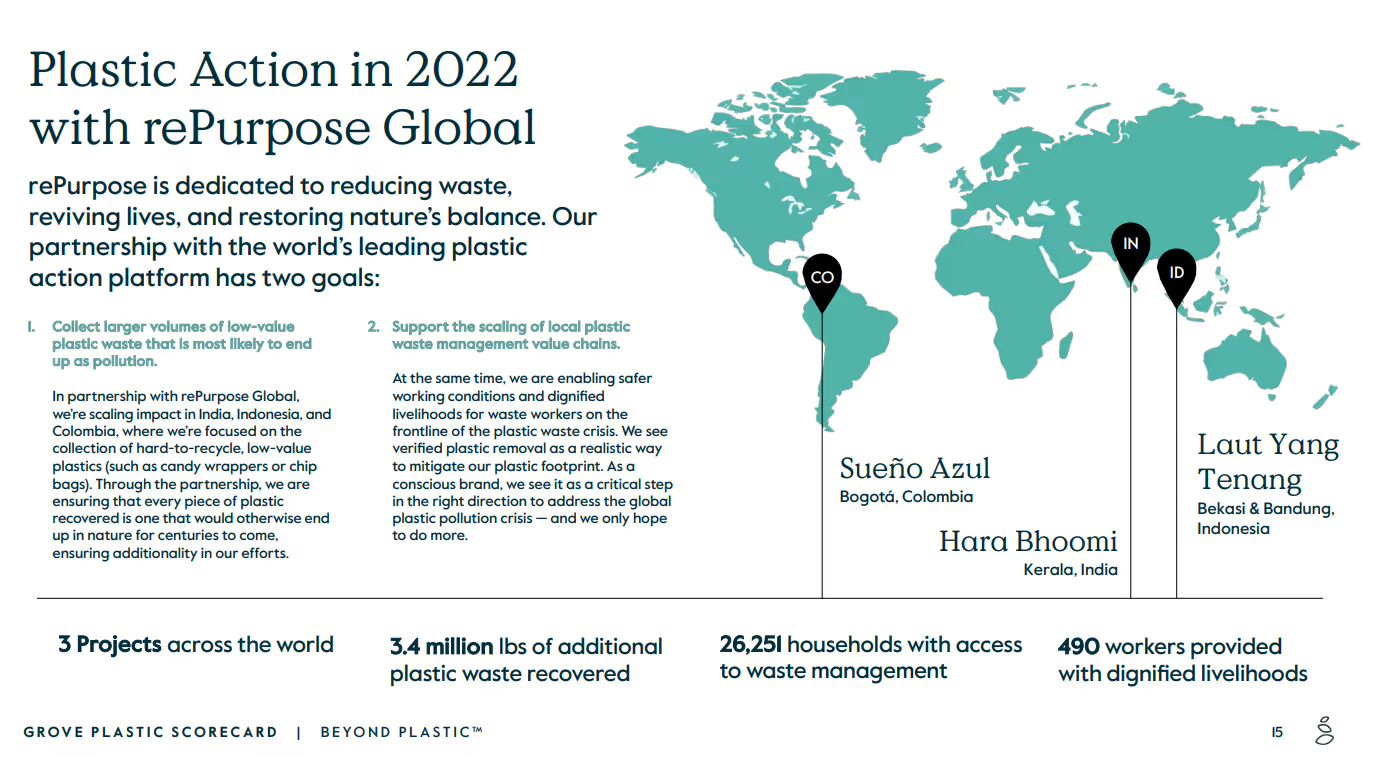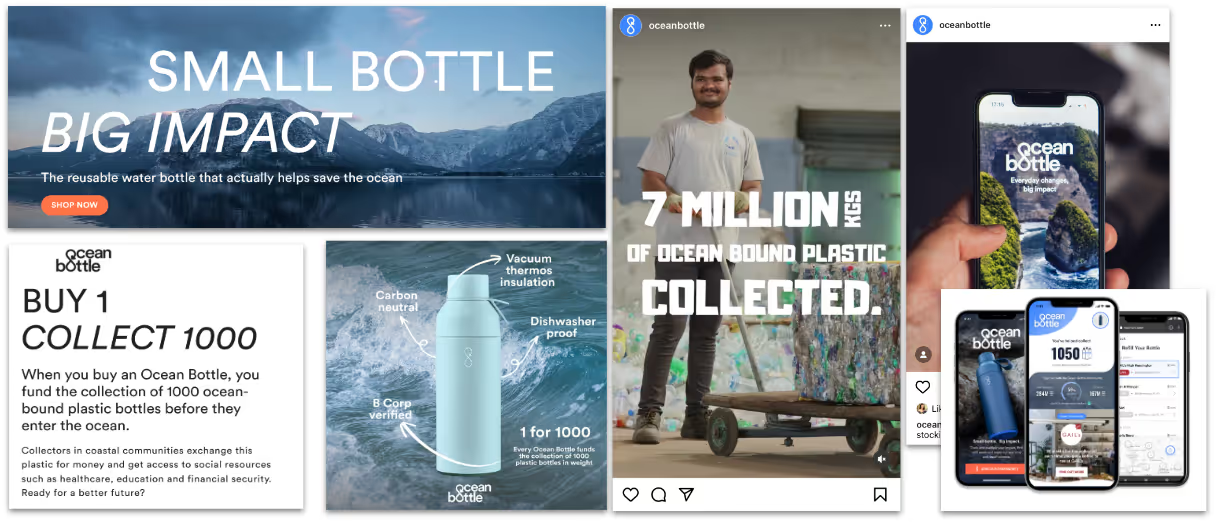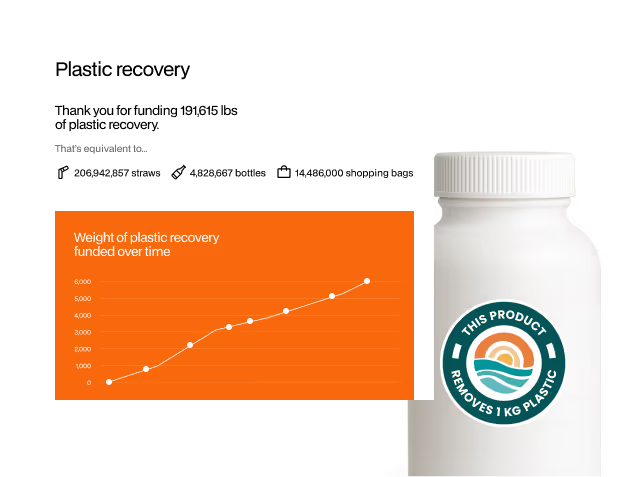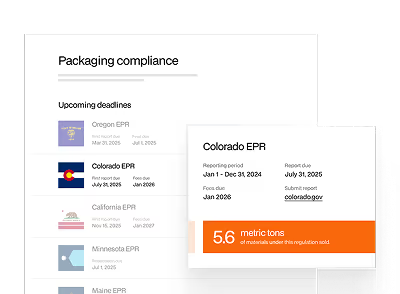What is Verified Plastic Recovery?
Verified Plastic Recovery (VPR) involves the ethical collection, sorting, and recovery of plastic waste.
VPR only applies to plastic that would otherwise have polluted the natural environment e.g. being dumped or burned. As it recovers plastic that is managed in addition to business-as-usual, this is called ‘additional’ plastic waste.
VPR ensures that plastics go to the best ‘end destinations’ - that means everything that can be recycled is recycled, and nothing is incinerated or sent to landfill.
It is called ‘verified’ plastic recovery as every step in the process is tracked and verified, and the documentation is regularly audited. That means that any brands funding VPR will receive accurate, credible, and high quality impact data.

Why is Verified Plastic Recovery needed?
The world is drowning in mismanaged plastic waste. The Breaking the Plastic Wave report shows that around 40% of global plastic waste is ‘mismanaged’ (91 million metric tons per year). That means it is polluting land, oceans, or - in the case of burning - the air. This results in 11 million metric tons of plastic entering the ocean each year.
Despite profound impacts on human and animal health, current action and commitments are completely inadequate. The report shows that without a change in the system, we are on a path to increase the amount of plastic waste mismanaged to 56% by 2040 – more than doubling the amount of plastic pollution (239 million metric tons per year) and tripling the amount reaching the ocean.

Brands and Verified Plastic Recovery
Verified Plastic Recovery (VPR) is a way for any business to act on the global plastic waste crisis.
Many brands have committed to reducing virgin plastic use, and/or increasing packaging recyclability. But, this won’t happen overnight, and until brands are plastic-free or have 100% circular products and packaging, they are still contributing to plastic pollution. Even then there will be decades of legacy plastic pollution accumulating in some regions, unless plastic recovery action is taken.
No plastic waste strategy is complete without acting on the existing problem and stopping the flow of plastic into the environment.
Fortunately, it has never been easier or more impactful to take action on plastic pollution. rePurpose Global’s VPR solution enables brands to participate in the solution, and supports the livelihoods and wellbeing of waste workers in marginalized communities.

How it works
1. Selects an impact portfolio
The business explores the quantity of plastic to recover, and which of rePurpose Global's impact projects to fund.
2. Collect, recover and verify plastic waste
Projects collect plastic waste that would have ended up in nature – on behalf of the business - and ensure ensure environmentally sound management.
3. Data is tracked and reported
Every step of plastic collection, recovery and processing is tracked, providing the business with verified data. Project documentation and data are audited by independent third parties twice a year.
4. Communication opportunities
Following the first three steps opens up different brand building possibilities to make unique, transparent communications about action on plastic pollution in marketing, communications, ESG reporting, and more. Four examples of this are given below.
For more information about VPR, or to explore how your brand can take action on plastic pollution see rePurpose Global's Plastic Action Platform.
4 ways that funding Verified Plastic Recovery energizes brands
1. VPR as part of a comprehensive plastic action strategy
Businesses increasingly have commitments to reduce virgin plastic use, and increase packaging recyclability. But until plastic is removed from the value chain completely, or is 100% circular, it is likely that the business is contributing to plastic pollution. Unfortunately, even plastics that are recyclable are often landfilled, incinerated or exported (only about 5% of plastics in the USA are recycled, for example).
Funding VPR results in immediate action against plastic pollution. It also funds long-term projects, training and infrastructure development.
To see two case studies of Grove Collaborative and Burt's Bees taking responsibility for plastic use, and having VPR as part of a comprehensive plastic action strategy, please download: Recover plastic. Reenergize your brand.

2. VPR enabling action on plastic pollution with every purchase
VPR can be linked to purchases. For example, a brand can fund VPR so that for every one product bought, the equivalent of one plastic bottle is recovered from the environment (“one for one”).
Mananalu (aluminium bottled water) has built the brand around a "Drink one. Remove one." promise that means recovering the equivalent one one ocean-bound plastic bottle for every Mananalu bottle.

Ocean Bottle (reusable water bottles) have a "Buy 1. Collect 1000." (collecting the equivalent of 1,000 ocean-bound plastic bottles for every bottle purchased) as part of their mission.

Linking positive action with purchasing empowers customers to take action on plastic waste, and helps to establish the brands' environmental missions.
For more information on how Mananalu’s Drink One, Remove One is powered by rePurpose Global VPR download: Recover plastic. Reenergize your brand.
3. VPR-powered campaigns
VPR can be linked to other actions too. For example, a business can fund an amount of plastic recovery through rePurpose Global for every social media share, event attendee, or newsletter signup. Here are some more examples:
GreenBiz (media/events company) work with rePurpose Global to collect 100 nature-bound plastic bags per attendee at its events

Earth Animal (pet food) ran a VPR-powered campaign for social media posts during July 2023. Partnering with rePurpose Global, the brand pledged to recover:
- 25 nature-bound plastic bottles per like;
- 50 nature-bound plastic bottles per share

4. Plastic Action Certifications underpinned by VPR
Products can be certified Plastic Neutral or Plastic Negative, for brands funding VPR and meeting other criteria:
- Plastic Footprint measurement. Measure the amount of plastic used in the product and packaging.
- Commitments to reduce plastic use. Certifications are only awarded to brands who are working to reduce their plastic footprints.
- Fund Verified Plastic Recovery. For Plastic Neutral this requires recovering as much as the product’s plastic footprint. Plastic Negative is awarded to products recovering at least twice as much as the product’s plastic footprint.
These consumer-friendly certifications help brands to communicate their VPR action - on-pack and online.
Recent consumer research from rePurpose Global showed that seven in ten US adults say they are more likely to buy a product if it supports the fight against plastic pollution (research to be published soon).
rePurpose Global has also developed Net Zero Plastic Footprint certifications for products that take into account use of recycled materials, and recyclability. Workplace certifications are also available for organizations funding VPR action and meeting reduction commitments and other requirements.
For case studies of Chocxo and WooBamboo, businesses with product certifications underpinned by VPR, download the full report here.
--

.avif)
.png)
.avif)
.png)
.avif)






